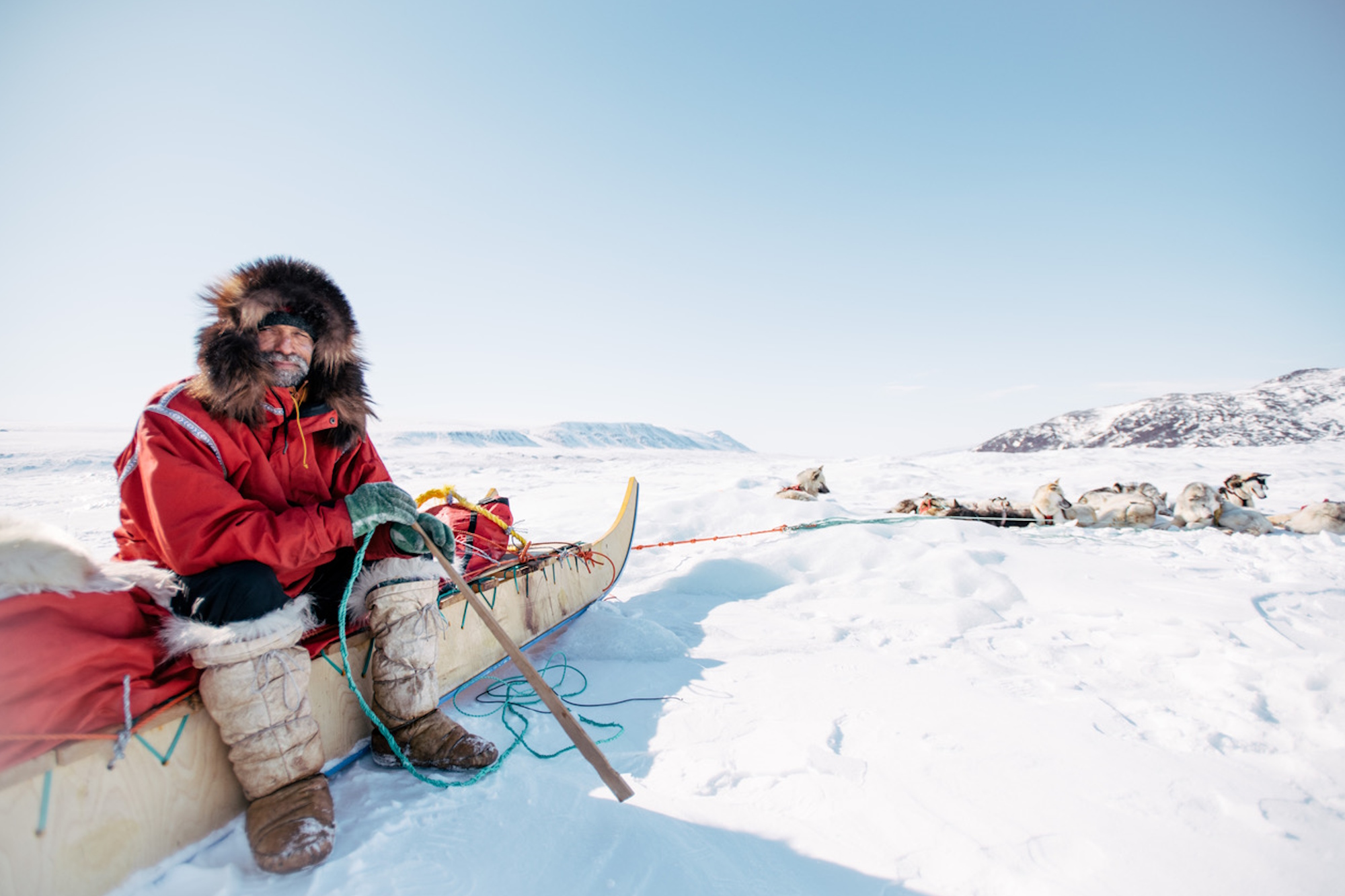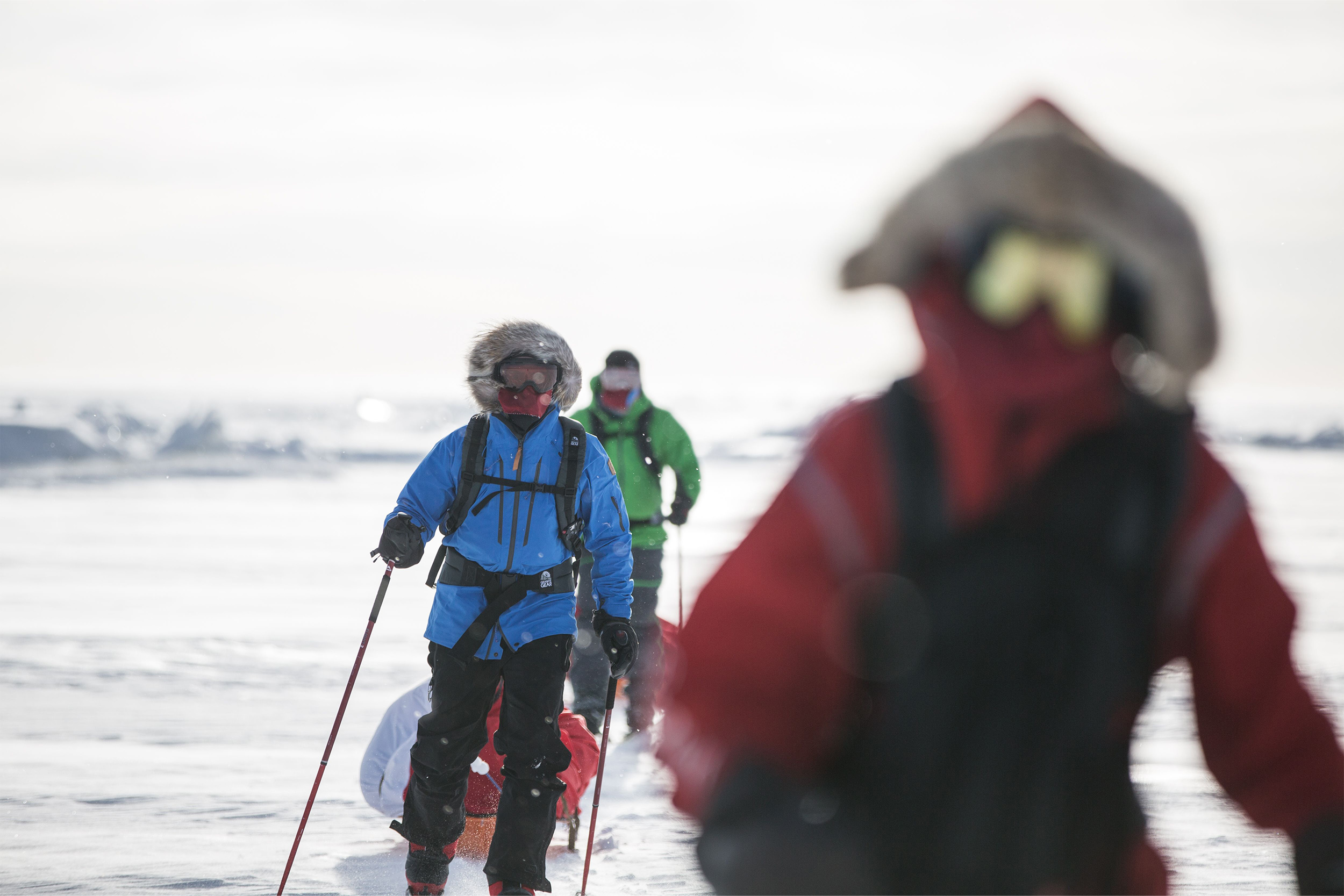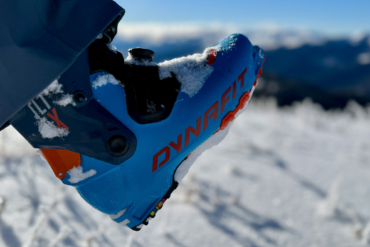Polar explorer Lonnie Dupre has spent the last four-and-a-half decades forging uncharted paths. In 2001, he and John Hoelscher completed the world’s first and only non-motorized circumnavigation of Greenland, covering 6,500 miles on dog sled and kayak.
In 2022, Dupre returned to the country to film Amka, a documentary focused on his unique relationship with the Polar Inuit community that will appear on the U.S. film festival circuit in spring and summer of 2024.
Throughout Dupre’s decades of polar adventures, he has put gear to the ultimate tests and taken stock of textile evolutions first-hand in the harshest environments.
“The fabric has got to be durable. It’s got to be packable. It’s got to be light and it’s a tough combination to meet all those criteria. Your life literally does depend on it,” Dupre told GearJunkie. He’d just returned from another winter ascent in the Alaska Range when we spoke.
“There are sections of Greenland where you’re totally on your own,” Dupre continued. “We pulled whitewater canoes to the North Pole. If anything breaks down, we’re in trouble. Nobody is landing an airplane on floating sea ice. Nobody is coming to get you when shit goes wrong.”
Lonnie Dupre: Built for the Cold, Loves to Stay Warm

Dupre is a Minnesota native who naturally runs warm and can likely tolerate much lower ambient temperatures than most human beings. Still, the polar explorer aims to be as comfortable as possible when he sets out on his arctic adventures. And that’s the advice he would give anyone who wants to go somewhere as viciously frigid as Greenland.
“I’m dialed into extreme cold,” Dupre said. “When we go out on a trip like Greenland, it’s on the very extremes of what this planet puts out, but we don’t want to go there and suffer. Often our society gauges the significance of anything we’re doing by how much suffering we endure. It’s not about suffering. It’s about going out with good preparation and respecting where you are.”
Dupre has experienced the winning qualities of new gear as technology has advanced. Choosing the right gear for any polar expedition is critical to its success. Over the years, he’s latched onto a few technologies that have become essential to his expeditions.
The first, if you can believe it, is cotton.
Polar Explorer: Finding Gear Worthy of Greenland
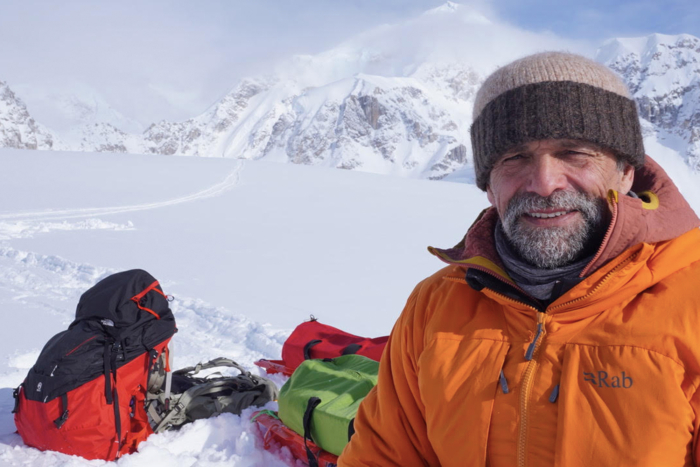
Windproof Cotton
“Looking at what kind of clothing we’d use for circumnavigating Greenland [in 2001], we wanted to try out Ventile cotton — a tight-weave cotton that is so tight it keeps the wind out. When the weave gets a little moisture from outside, it swells up and becomes highly water-resistant,” Dupre said.
Scientists at the Shirley Institute in Manchester, England, developed Ventile in the late 1930s for use in fire hoses and water buckets. The tight weave also works as a wind stopper.
The polar explorer explained that adding wax to the Ventile made the material even more water-resistant while also, to a lesser extent, maintaining its breathability. However, 100% Ventile cotton proved problematic when kayaking through salt water, he said.
“So when you get waxed cotton wet with salt water, the constant movement of the anorak when paddling develops little stress tears in the creases,” Dupre said. “So basically after a month and a half of paddling, the anorak develops little tiny holes where it was creasing.”
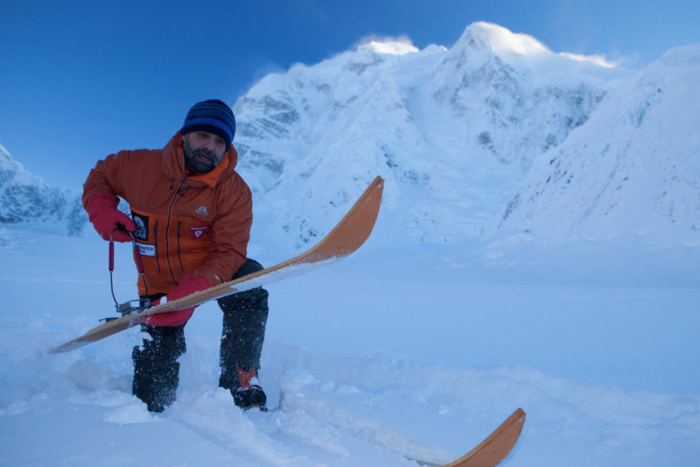
Dupre’s first circumnavigation of Greenland took five years altogether. The longest kayak journey during that time was three months straight.
He and his partner Hoelscher would spend full days navigating a football field-long stretch of broken glacial ice, dragging their crafts up and over chunks of frozen water. Sometimes polar bears would be eyeing them hungrily from a few yards away. More than once once, he said they inadvertently plunged into the frigid depths.
The dogsled journeys, the longest of which was 90 days, also presented harsh obstacles and challenges of its own.
Having holes in your anorak in situations like that becomes a serious problem. Dupre later tried an 80/20 ventile cotton/polyester blend that he said worked extremely well. It was far more resistant to tearing and was as water-resistant and breathable as anything he says he’s come across since.
The Power of Polyester
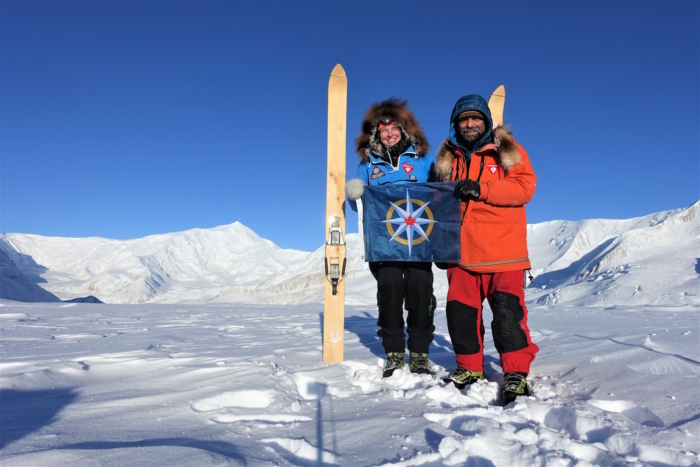
Dupre and his partner returned to Greenland in 2022, geared up to manage the challenges even more efficiently. They worked with the brand Wintergreen Northern Wear in Ely, Minn., to design special anoraks for that second journey. The brand makes the Expedition Shell Anorak from three-ply Supplex nylon with a DWR coating and polyester lining.
“This is an extremely durable, breathable fabric that would take a beating of sled dogs jumping on it, yet it’s pretty darn windproof,” he says.
Both he and Hoelscher used a second windshield layer beneath made from a tight weave called Versatech made by Burlington Industries. Versatech has been around since the ’80s. It was one of the original “breathable, water-repellant, active outerwear” fabrics.
“It made the anorak slippery on the inside so that you could pull it on and off. Your body moved with it really well,” he said. He didn’t feel he had anything bulky on. It created a double windstop layer. Any cold air that made it through the first layer stopped at the second.
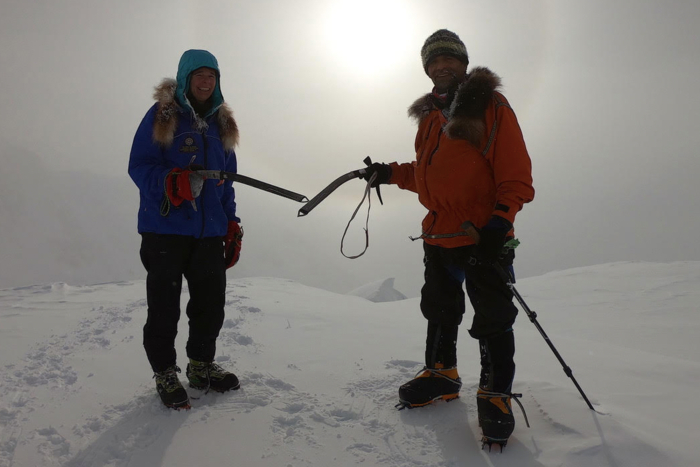
“Also, in extreme cold weather, your perspiration would go through the inner Versatech layer and turn into frost at the supplex layer. Your simple movement would drop that frost down between the two fabrics. They were connected everywhere besides the bottom hem. It was better than a tent.”
The two polar explorers lived in this anorak 24-7, he said. They never needed to hang it up to dry or do any repairs. To avoid potential complications or zipper breakage, they had it designed as a pullover with cargo pockets on the front, and an attachable fur ruff on the hood.
Synthetic Insulation to the Rescue
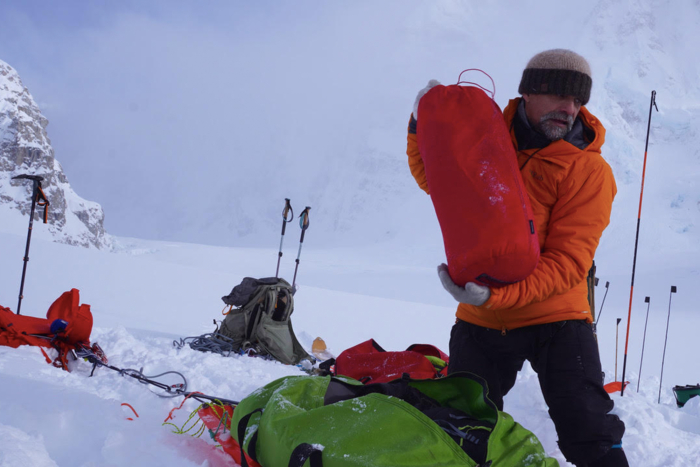
For Dupre’s return to Greenland and every single one of the polar explorer’s expeditions in frigid climates, he said the biggest breakthrough in material came with PrimaLoft.
In 1983, PrimaLoft’s parent company, Albany International Inc., developed and patented the first synthetic microfiber alternative to goose and duck down for the U.S. Army. In 1990, L.L.Bean and Polo Ralph Lauren were the first brands to introduce the technology to consumers. It was during the 2000s that the synthetic down really took flight.
“I ended up being interested in PrimaLoft because they claimed at the time that it was a synthetic down. I knew the quality of synthetic fibers — mainly polyester — wouldn’t absorb any moisture as opposed to wool. A lot of those would absorb [half of a] percent whereas wool will absorb almost 26 percent and take much longer to dry.”
Dupre first tried the PrimaLoft technology in the late ’90s in a sleeping bag made by Canadian company Integral Designs. His previous sleeping bag used hollow core polyester fiber modeled after caribou and polar bear fur — the insulation fibers were straw-like, stiff, and also bulky. PrimaLoft’s fibers were also hollow but thinner, crimped, and feather-like.
That turned out to be the winning formula for warmth and packability, as each fiber is seven times finer than a human hair. Today synthetic insulation like PrimaLoft is used in apparel, footwear, and gear by almost every outdoor brand. It is a ubiquitous insulation material because it is so useful in wet conditions. Unlike down, synthetic insulation will keep you warm even if it’s soaked.
“It’s really about creating air space,” Dupre says. “The hollow core hair trapped warm air, creating dead air space for warmth. PrimaLoft made it super fluffy, so when the heat was between layers of fabric, it created wonderful dead air space that you could compress almost to the size of a down bag, only slightly heavier.”
Incorporating PrimaLoft into his polar expedition gear was a huge epiphany for Dupre. Between that, his anorak and layering system, Dupre has refined his polar expedition kit.
Dupre’s Favorite Polar Outerwear
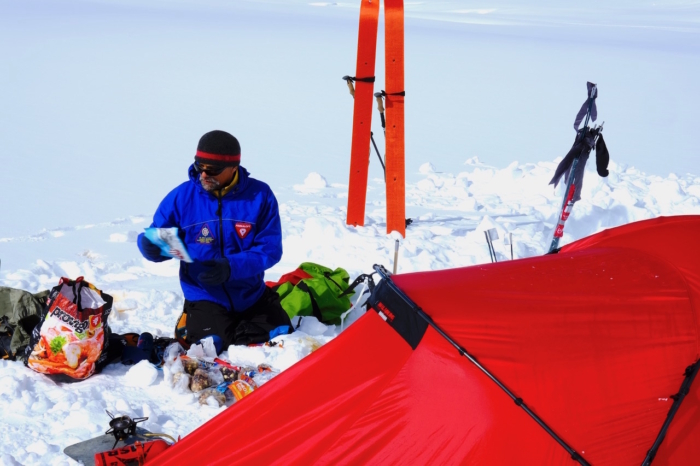
Dupre used two sleeping bags for his 2022 return trip to Greenland: an inner and an outer bag. He said the temperature rating between the two of them added up to -30 F. The bags use PrimaLoft Rise Loose Fill for insulation. They are also made from 100% post-consumer recycled vegan material.
His go-to polar explorer kit for his most recent excursion included Rab Hot Socks, an L.L.Bean PrimaLoft Packaway Vest, Rab Photon pants, Rab Xenair Alpine Hoodie, a Black Diamond Vision Hybrid Hoody, and a Black Diamond Belay Parka.
The Rab pants and Alpine Hoodie use PrimaLoft Gold+ Insulation, which is water-resistant, fast-drying, and thermally efficient insulation. It’s also highly compressible, along with an outer layer of Pertex. The Black Diamond Vision Hybrid Hoody uses PrimaLoft’s Cross Core fibers and Aerogel technology.
The Belay Parka is one of the warmest synthetic jackets Dupre has ever come across. It has Cross Core insulation throughout, plus 200gsm mapped PrimaLoft Rise, a 20D nylon taffeta liner for an extra layer of warmth, and a 50D PFC-free ripstop shell.
“These Belay jackets, they’re super warm,” Dupre says. “At the end of the day, you’re cold, you’re chilled, you could be a little damp, lacking calories. It could be 20 or 30 below. You get into camp and put that on, it’s like walking into a warm house. That parka conserves your heat.”
AMKA: Dupre’s 2022 Return to Greenland
When Dupre ventured back to Greenland in 2022, a film crew went with him. They followed Dupre as he put together a dog sled team, trained them, and traveled alongside Inuit hunters to a remote part of Greenland. The trailer for AMKA — which means “one with a friendly spirit” in Inuktun — was posted to YouTube in September 2023.
“I couldn’t be happier exploring than off the back of a komatik with a team of dogs,” Dupre said in the film’s trailer.
Dupre produced and appears in AMKA. Eva Capozzola directed the film. Dupre said that it will start screening at U.S. film festivals in the spring and summer of 2024. To learn more about the polar explorer’s film, visit Capozzola’s webpage.
